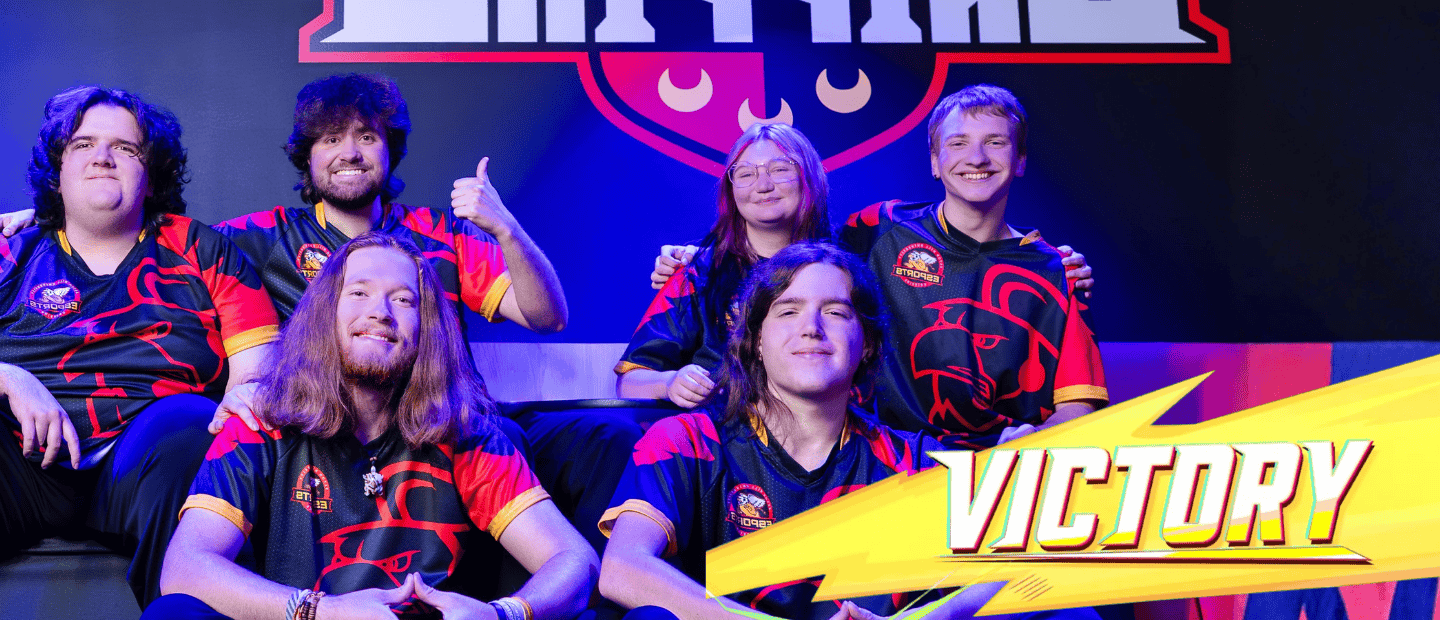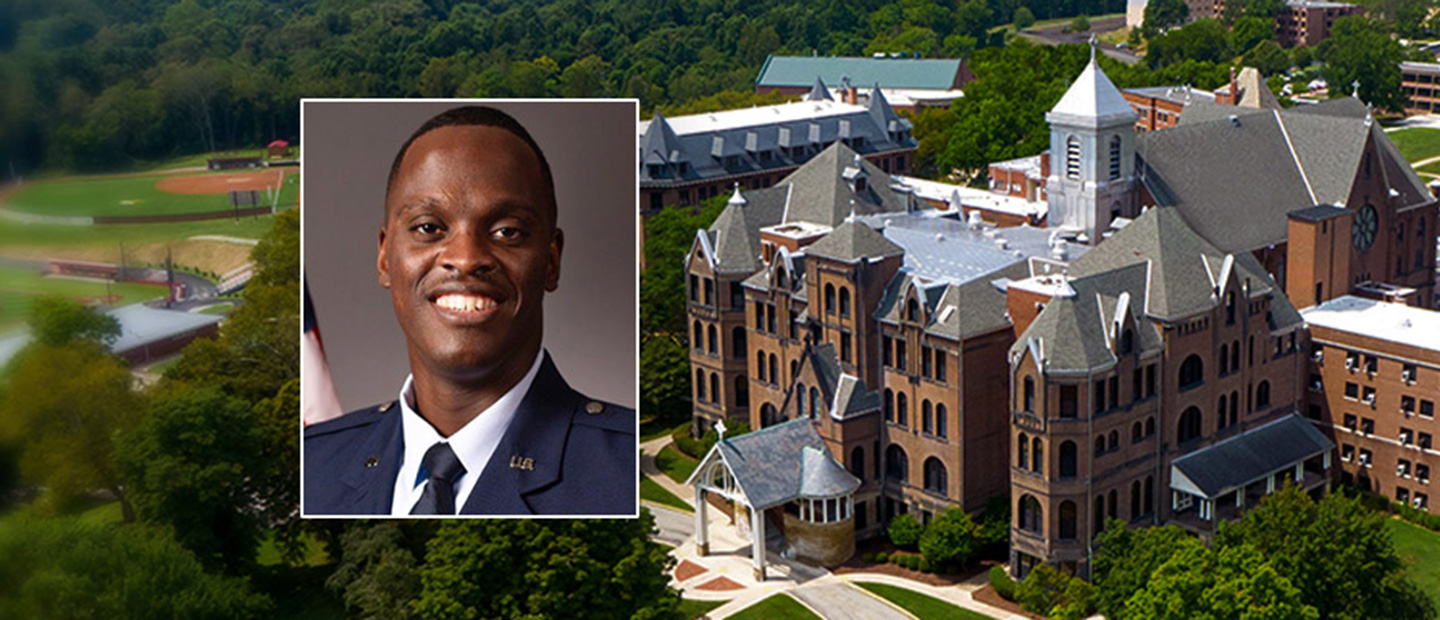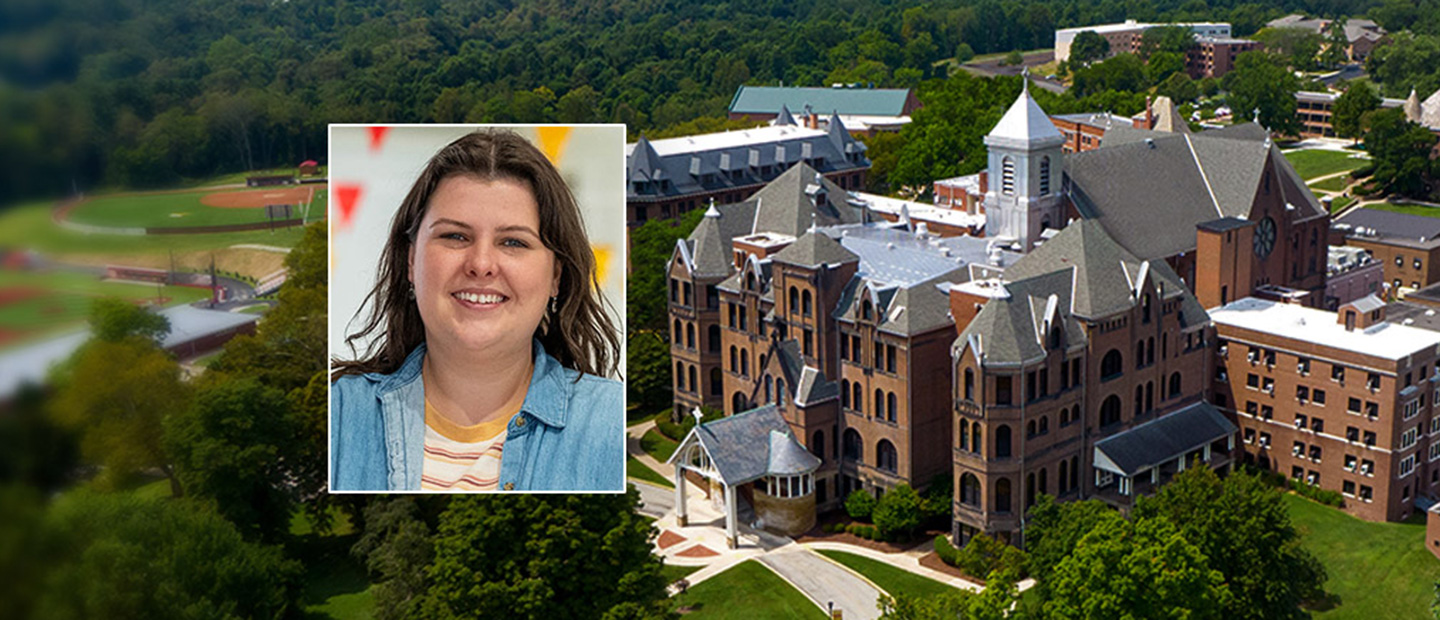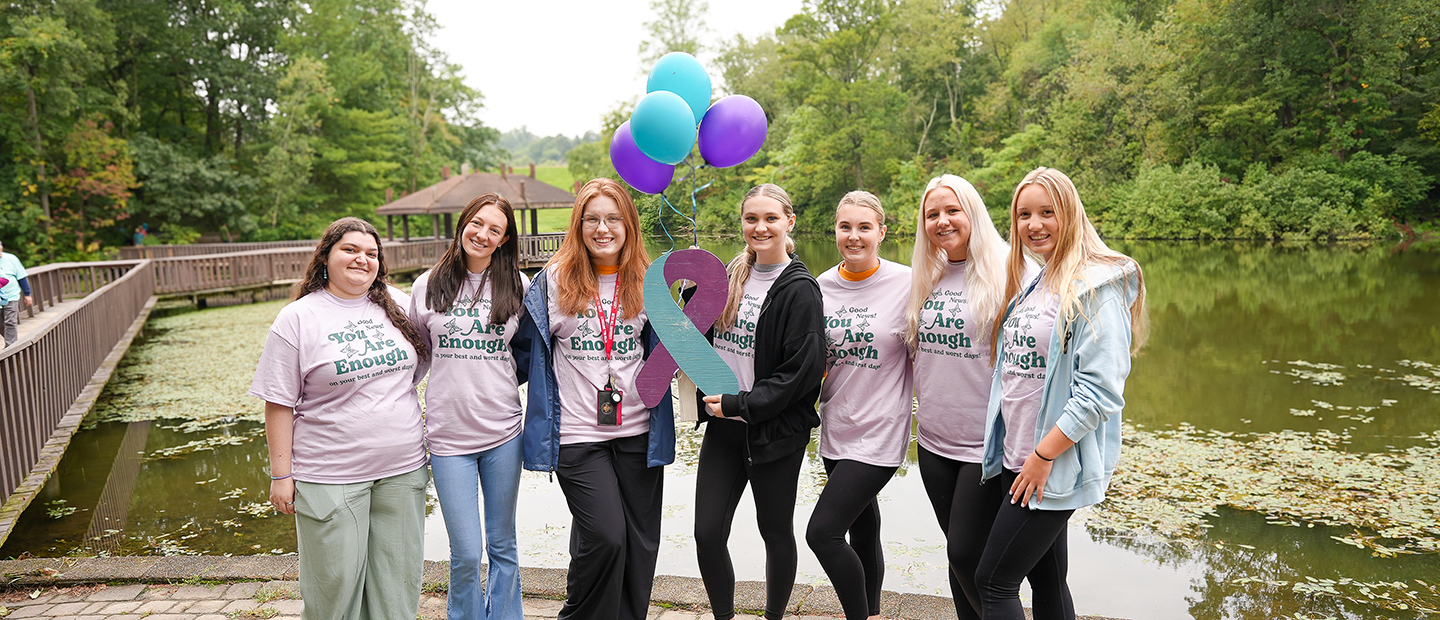Sisters in Crime: Writing MFA Graduates Recognized For Their Mystery Writing
by Chelsianna Havko, English/environmental studies major & marketing communication intern
Victoria Thompson and V.M. Burns, alumnae of Seton Hill University’s Writing Popular Fiction M.F.A. Program, have both been featured in the “Sisters in Crime” Summer/Fall 2021 newsletter. Both published mystery writers, V.M. Burns and Victoria Thompson kindly took the time to answer some questions about their experiences in the Seton Hill M.F.A Program, and how they first got into writing.
What made you choose Seton Hill’s Writing Popular Fiction program?
Victoria Thompson: I had been teaching in the program since the second term of its existence, January 2000, so I knew how good it was. I had often considered entering it myself, but I knew if I wanted to teach at the college level, I would need a doctorate, and I also knew I’d never make that effort. Then in 2010, the program changed from an MA to an MFA and I couldn’t resist the lure of a terminal degree.
V.M. Burns: The idea of returning to school for yet another degree was daunting. I had a full-time job and numerous responsibilities, but I also had a dream of becoming a published mystery author. After years of reading books, attending workshops and seminars, and sending hundreds of query letters to agents and editors and getting hundreds of rejections, I knew that I needed to try something different.
I started researching authors that I admired to figure out what they had done in the hopes of replicating their success. One of my favorite mystery authors, Victoria Thompson, had recently updated her biography and indicated that she was an adjunct professor in Seton Hill’s Writing Popular Fiction (WPF) program. Prior to that, I wasn’t familiar with Seton Hill. I researched the program and was impressed to learn that all of the professors are published authors. Here were people who could speak from experience and not talk about theory. I was also pleased that the focus was on genre fiction. Many MFA programs focus on literary fiction, not genre fiction and I’d heard horror stories from writers who’d been discouraged from writing what they loved in those programs.
"I think this is what sets the WPF program apart from most other writing programs in that so many of our students do achieve commercial success."
Another important factor for me in choosing Seton Hill was the fact that the WPF program is low residency. A low residency program provided the flexibility that I needed to maintain my lifestyle while continuing my education. I couldn’t afford to quit my job and attend school full-time. So, this program was perfect.
Would you say that entering the program was a big turning point for you as a writer?
V.M. Burns: I absolutely believe that I would not be published today, were it not for Seton Hill’s WPF program. I don’t believe that everyone needs an MFA to be a writer. In all honesty, my initial goal wasn’t acquiring an MFA. I already had one master’s degree in business from the University of Notre Dame. However, there’s a lot of information that you can’t learn from reading books. I gained a lot from the community of writers who generously shared their insights and experiences. I graduated in January 2015 and by the end of that year, I had an agent. A few months later, I had my first book contract for a project I started at Seton Hill. My publisher asked if I’d be interested in writing another series for one of their imprints, and a few years later, I sold my thesis novel to a small press. I don’t believe any of that would have happened without the WPF program.
Victoria Thompson: Although I’d published 31 novels, the program was still a big turning point for me. I had reached an impasse with my Gaslight Series and after 14 books, it was getting stale. Discussion with fellow students in one of my online classes gave me just the idea I needed to reboot the series and solve a major plot problem I’d been wrestling with for years. That series is now 25 books long and still going.
The other big turning point was the inspiration for a second series. I had been researching a new historical time period in preparation for launching a new series, but I hadn’t settled on an idea yet. In one of my classes, the instructor had us do a plotting exercise and to my surprise, in about 10 minutes I was able to plot the entire first book of what has become the Counterfeit Lady Series. This series is now 5 books long and still going.
I understand that you are now both writing mentors in the program. What is that experience like? Do you think it has impacted your own writing at all?
Victoria Thompson: I’ve been teaching in the program for almost 22 years now, and I think I have gotten more out of the experience than any of my students. Teaching others helps keep my skills sharp and critiquing others’ work is a wonderful way to learn to recognize my own mistakes. I have been fortunate to see many of my former students get published and achieve success. I think this is what sets the WPF program apart from most other writing programs in that so many of our students do achieve commercial success.
V.M. Burns: It’s great to be back at Seton Hill, although I’m still adapting to being on the other side of the podium. One of the best features of the WPF program is the wonderful community of writers, both instructors and students. Writing can be a lonely activity, so it's great to be around like-minded individuals who share my passion. There aren’t a lot of places where you can talk about murder and poisons without getting weird looks. Without the deadlines and the accountability that is a part of the WPF program, it’s easy to fall into a routine and allow the daily pressures to encroach on my writing and reading time. Being a mentor forces me outside of my cozy mystery comfort zone. In the WPF Program, we read and critique a broad spectrum of material that can inspire creativity, which is definitely helpful in my own writing.
Can you tell me more about how you got into writing fiction and how your career in writing has changed over the years?
Victoria Thompson: I started reading Westerns back in the early 1980s, and I read so many, I started dreaming about the Old West. One of those dreams became the seed that grew into my first novel. I didn’t really think about getting published. I just knew I had to write the story down or my head would explode. When it was finished, I decided to try to publish it and after several years and a couple revisions, it finally sold. I then published 20 historical romances before that market tanked in the late 1990s. Berkley Publishing was looking for someone to write a series set in turn-of-the-century New York City, so I sent them a proposal and that became the Gaslight Mystery Series. I’ve since published 30 historical mysteries.
V.M. Burns: Like most writers, I love reading. I grew up in a house that was three blocks from a neighborhood library. I read a lot of books and did a lot of what I called “imagining.” If I read a book that I didn’t like, I imagined changes that would (in my opinion) make it better. If I read a book that I enjoyed and wanted to know what came next, I imagined the sequels.
I read the classics, but I also read a lot of Harlequin romance, science fiction, fantasy and mystery (primarily Nancy Drew) novels. Eventually, I stumbled across Agatha Christie and I was a goner. Over the years, I started a list of the mysteries I wanted to read. I called it my “wish list:” I wish someone would write a mystery about…After decades of not finding the books on my wish list, I decided maybe I could try my hand at writing. So, with no plan, no outline, and no idea of what I was doing, I sat down and started writing a mystery. Needless to say, I didn’t get very far, but I did get started.
One of my close friends from college was studying to be a screenwriter. Tapping into my “imaginings” I suggested lots of ideas for screenplays that I thought she should write. She suggested I write these ideas myself. She even gave me a book on screenwriting to help me get started. I read books, attended seminars, and threw myself into screenwriting.
One year the annual screenwriting conference I attended was combined with a publishing conference which was attended by fiction writers and publishers. Unlike the doom and gloom I’d experienced in the screenwriting workshops, these classes were upbeat. The writers were friendly and hopeful. So I dusted off my half-finished manuscript and pitched the idea to a publisher. Hundreds of rejections later, I found my way to Seton Hill and the WPF program.
How did you get involved in “Sisters in Crime”? Can you tell me more about the organization and what it means to you?
Victoria Thompson: Sisters in Crime is a unique organization in that it was started by female mystery writers who were fed up with the male dominance of the genre. Back then, few female writers were published, and those who were rarely saw their books reviewed in prestigious publications or found themselves nominated for the awards that were given to recognized excellence. Through the efforts of SinC, that has changed. We are still a long way from equity, but female writers are regularly reviewed and awarded, although still not in the same numbers as male writers.
V.M. Burns: The organization supports equity and inclusion, and with over 4,500 members SinC is open to both men and women in all phases of their writing journey. This was one of the things I loved about the organization. SinC isn’t just a group that supports successful, traditionally published crime writers who are making millions of dollars and sit atop the bestseller lists for years. SinC is a grassroots organization that embraces indie and traditionally published authors as well as aspiring writers, reviewers, and people affiliated with crime fiction.
What specifically about the mystery genre interests you as a writer?
V.M. Burns: Mysteries are essentially puzzles which are hidden in plain sight. The author creates a (hopefully) interesting tale that involves a mystery or puzzle, usually murder. Like any good puzzle, there are clues that will lead to the correct solution. However, there are also false clues called red herrings, designed to send readers down rabbit holes and throw them off the trail. Which clues are false and which are real? It’s a race to the end to see if the reader can pit their wits against the author’s and solve the puzzle at the same time as the fictional detective or sleuth. As a writer, I love the challenge of engaging in a game with the reader.
Victoria Thompson: Like most people, I would like life to be fair, but as we all know, it isn’t. In a mystery, the author gets to write about a world in which the good guys always win and the bad guys get what they deserve. I like seeing justice done, and I can do that in my mystery novels. I think millions of readers agree, which is why the mystery genre is so popular.
Photo above: Victoria Thompson (left) and V.M. Burns after V.M. Burns finished defending her M.F.A. thesis (that later became a published novel).



